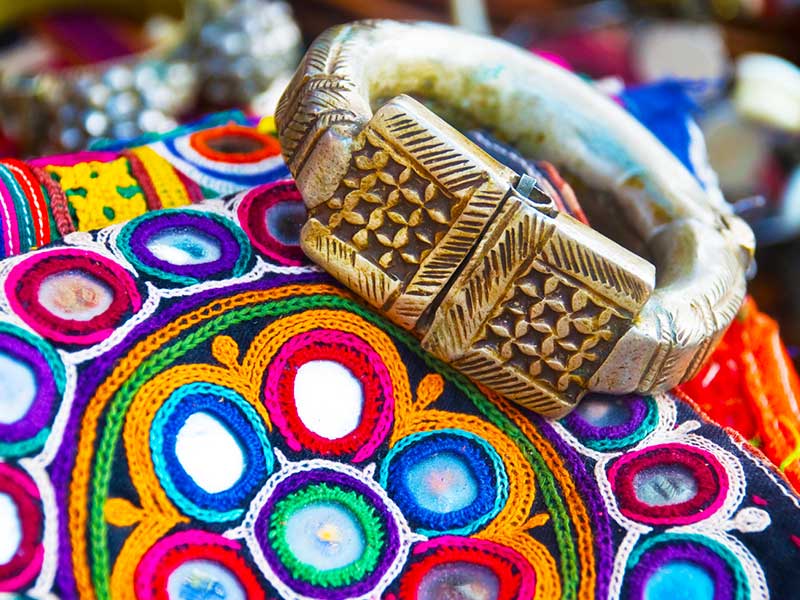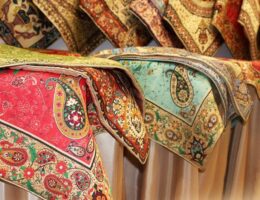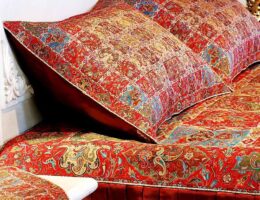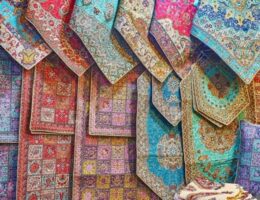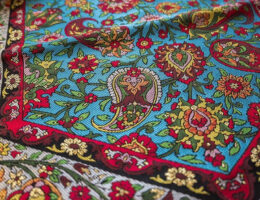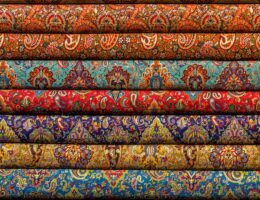IRAN ART EXHIBITION: SUZANDOZI OR NEEDLEWORK IS A POPULAR ART BETWEEN IRANIAN
Naqsh work is one of the most famous and striking forms of Iranian embroidery, and was popular in the late eighteenth and nineteenth centuries. It is characterised by its diagonal bands and patterns of very densely worked stitching. The embroidery was especially used for panels that were sewn onto garments, in particular the lower legs of women’s voluminous trousers.
The diagonal bands include smaller stylised motifs, often of flowers, birds, or vases. Because of the intricate and dense nature of the embroidery, the panels were rigid, and hence also long-lasting. They were consequently often removed when the rest of the garment was worn out, and sewn onto a new garment.
The panels were either wool on wool or silk on wool. Sometimes the ground material is cotton. At times metal thread was used. In later years the diagonal patterns were reproduced in printed fabrics that were worn in particular by the Zoroastrian community Iran.
The name of naqsh is derived from a Persian word for ‘design’, ‘image’.
Suzani is a type of embroidered and decorative tribal textile made in Tajikistan, Uzbekistan, Kazakhstan and other Central Asian countries.
Suzani is from the Persian سوزن, Suzan, which means needle. The art of making such textiles in Iran is called سوزندوزی Suzandozi (needlework).
Suzanis usually have a cotton (sometimes silk) fabric base, which is embroidered in silk or cotton thread. Chain, satin, and buttonhole stitches are the primary stitches used. There is also extensive use of couching, in which decorative thread laid on the fabric as a raised line is stitched in place with a second thread. Suzanis are often made in two or more pieces, that are then stitched together.
Popular design motifs include sun and moon disks, flowers (especially tulips, carnations, and irises), leaves and vines, fruits (especially pomegranates), and occasional fish and birds.
Major types of Suzani embroidery
• Bukhara Suzani
• Khodjent Suzani (Khodjent, Tajikistan)
• Lakai Suzani
• Nurata Suzani, made in the town of Nurata in Uzbekistan.
• Pskent Suzani
• Samarkand Suzani
• Shakhrisabz Suzani
• Tashkent Suzani
• Ura Tube Suzani (Istaravshan, Tajikistan)
Technique
Suzanis usually have a cotton (sometimes silk) fabric base, which is embroidered in silk or cotton thread. Chain, satin, and buttonhole stitches are the primary stitches used. There is also extensive use of couching, in which decorative thread laid on the fabric as a raised line is stitched in place with a second thread. Suzanis are often made in two or more pieces, that are then stitched together.
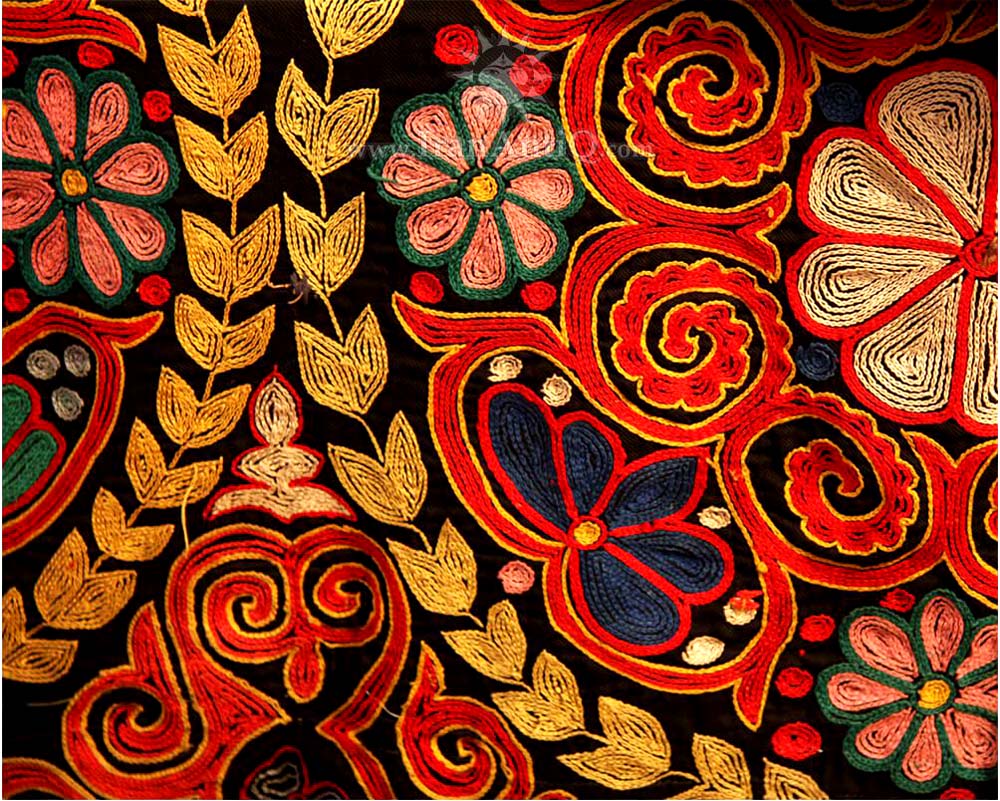
Application
IRAN ART EXHIBITION: Suzanis were traditionally made by Central Asian brides as part of their dowry, and were presented to the groom on the wedding day. These hand-embroidered vintage suzanis are infused with the character that only comes from everyday use. Perhaps created by a bride-to-be to show her devotion to her betrothed and then in lean times bartered away to a traveling Gypsy for money or household necessities pulled from the depths of his donkey cart. The story of each of these suzanis is as rich as their colors, as intricate as the designs that cover their surfaces.
Meaning & Symbols
Recurring design motifs include sun and moon disks, flowers such as tulips, carnations, and irises, leaves and vines, fruits and especially pomegranates, and occasional fish and birds.
Origin
The oldest surviving suzanis are from the late 18th and early 19th centuries, but it seems likely that they were in use long before that. In the early 15th century, Ruy Gonzáles de Clavijo, the Castilian ambassador to the court of Timur (Tamerlane), left detailed descriptions of embroideries that were probably forerunners of the suzani.
